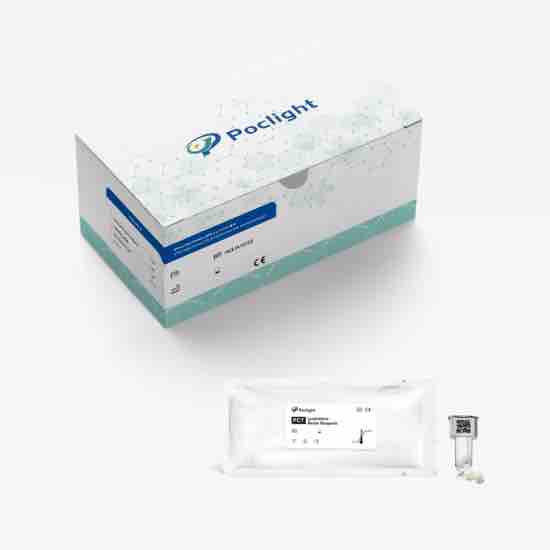Infectious diseases are one of the common diseases in the emergency department, and the systemic inflammatory response syndrome caused by infection is the most fundamental pathophysiological change in sepsis. Due to the complexity of the systemic inflammatory response, there are no ideal diagnostic, stratification, prognostic tools, and effective treatment options. A number of studies have demonstrated that the pathophysiology of early sepsis is functional and reversible. Therefore, early and accurate diagnosis and monitoring of sepsis is one of the decisive factors in improving prognosis. Procalcitonin (PCT) has a good association with infection and sepsis and has been recommended for the diagnosis, stratification, treatment monitoring, and prognostic assessment of bacterial sepsis.
1 Introduction to the PCT
1.1 The main biological effects of PCT
There is no clear conclusion on the biological effects of PCT, and the main biological effects are: the role of secondary inflammatory factors, the role of chemokines, anti-inflammatory and protective effects.
1.2 PCT detection methods and stability
At present, PCT can be detected by semi-quantitative and quantitative methods. Semi-quantitative methods include colloidal gold marker test, and quantitative methods include radioimmunoassay, immunofluorescence, bispecific antibody sandwich immunochemiluminescence detect PCT, enzyme immunoimmunoassay, etc.
PCT is very stable in blood samples, and when the blood is placed at room temperature for 24 hours after blood collection, the mass concentration of PCT only decreases by about 12%, and if stored at 4 °C, it only decreases by 6%. Freezing, anticoagulants, serum or plasma, arterial or venous blood have little effect on test results. If testing is required for prolonged storage, the blood sample needs to be stored at low temperature or freezing.
1.3 PCT normal values and reference ranges
The plasma PCT mass concentration in healthy people is less than 0.05 ng/ml. The plasma procalcitonin concentration of the elderly, patients with chronic diseases, and less than 10% of healthy people is higher than 0.05 ng/ml, up to 0.1 ng/ml, but generally not more than 0.3 ng/ml. The cut-off value for the diagnosis of PCT in patients with sepsis is more than 0.5 ng/ml, and the mass concentration of PCT in patients with severe sepsis and septic shock fluctuates between 5~500 ng/ml. Very few patients with severe infection have plasma PCT levels above 1000 ng/ml.
2 Recommendations on the clinical application of PCT level monitoring in the emergency department of common infectious diseases
2.1 Bacterial infections
2.1.1 Respiratory infections
Procalcitonin levels are higher in patients with bacterial pneumonia than in pneumonia caused by viruses, atypical pathogens (except Legionella), and tuberculosis. However, not all patients with bacterial pneumonia have elevated levels of procalcitonin levels, and about 50% of patients with bacterial pneumonia have a procalcitonin < 0.5 ng/ml. PCT < 0.1 ng/ml in 28% of patients with bacterial pneumonia, so a normal or mildly elevated procalcitonin does not rule out bacterial pneumonia.
PCT levels were positively correlated with the severity of pneumonia. A low level of procalcitonin (<0.1 ng/m1) may indicate mild pneumonia, a good prognosis, or pneumonia caused by a viral pneumonia, or an atypical pathogen, and is a reference indicator for not using or stopping antibiotics.
Monitoring the trend of procalcitonin can be used as a means to evaluate the effect of antibiotic treatment, and a persistent increase or non-decrease in procalcitonin is a sign of treatment failure.
2.1.2 Bacterial endocarditis
Initial symptoms of bacterial endocarditis are not specific, but procalcitonin levels may be elevated. Bacterial endocarditis should be considered in patients with associated risk factors (eg, valvular heart disease, post-valve replacement, immunocompromise, intravenous drug use) and symptoms of nonspecific infection if procalcitonin levels are elevated. If echocardiography (including transesophageal ultrasound TEE) is normal, PCT should be repeated shortly. The optimal cut-off value for PCT in the diagnosis of endocarditis is 2~3 ng/ml, while the exclusion cut-off value is 0.1~0.25 ng/ml.
2.1.3 Acute bacterial meningitis
Procalcitonin for bacterial meningitis is usually higher than 0.5 ng/ml. Viral meningitis and focal infections are generally not elevated. If PCT>5 ng/ml is used as the diagnostic cut-off, the sensitivity and specificity for the diagnosis of bacterial meningitis are 94% and 100%.
2.1.4 Bacterial peritonitis
The study found that the plasma procalcitonin level was significantly increased in bacterial peritonitis, and the plasma procalcitonin level in localized peritonitis (appendicitis, cholecystitis, etc.) was only moderately or not elevated. Patients with cirrhosis and ascites without co-infection had normal procalcitonin levels, and the levels of plasma and ascites were significantly increased after co-infection.
2.2 Viral infection
In viral diseases, PCT does not increase or only mildly increases, generally not exceeding 1~2 ng/ml. The sensitivity and specificity of PCT in identifying viral diseases are higher than those of traditional markers (such as C-reactive protein, leukocytes, erythrocyte sedimentation rate, etc.). A recent study compared the ability of a variety of biomarkers to distinguish between bacterial and viral infections, including PCT, IL-1B, IL-6, IL-8, IL-10, IL-12, TNF-α, IFN-γ, sCD14, etc., and found that PCT had the best sensitivity and specificity for bacterial infection, with an area under the ROC curve of 0.952 for diagnosing bacterial infection, and the median PCT for bacterial infection in this study was 1.84 ng/ml. The median PCT for viral infection was 0.05 ng/ml. Procalcitonin (PCT) is recommended to assist in determining whether the causative agent is bacterial or viral, so that initial empiric anti-infective therapy can be targeted.
3 Application of PCT level monitoring in sepsis
3.1 For the PCT diagnosis test and differential diagnosis of sepsis
Procalcitonin levels were significantly higher in patients with sepsis than in patients without sepsis, and those with bacterial sepsis were significantly higher than those in nonbacterial sepsis. Elevated procalcitonin is highly specific for sepsis due to bacterial infection, so it can be used as a biomarker for diagnosing sepsis and differentiating severe bacterial infection. If sepsis is suspected, immediate procalcitonin is recommended.

3.2 Assess the severity and progression of sepsis
When the PCT concentration rises from 0.5 ng/ml to more than 2 ng/ml, the incidence of serious bacterial infection or sepsis increases. However, in the first few days after severe liver and kidney dysfunction or surgery/trauma, PCT at 0.5~2 ng/ml can be regarded as a normal range. PCT levels above 2 ng/ml or even greater than 10 ng/ml are associated with a very high probability (>90%) of sepsis, severe sepsis, or septic shock. A high level of procalcitonin indicates a very severe systemic inflammatory response and a high risk of death, and antibiotics and other targeted therapies should be started immediately.
Because procalcitonin is correlated with the severity of sepsis, dynamic monitoring of trends in PCT levels can determine progression. A persistently elevated procalcitonin indicates an exacerbation of infection or treatment failure, and a decrease in procalcitonin can be considered an improvement in infection and a successful treatment.












